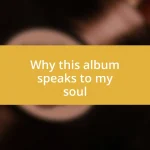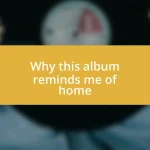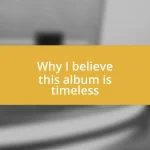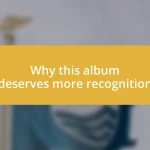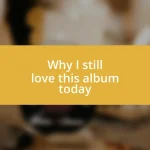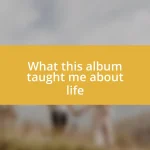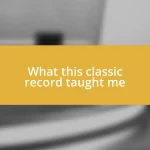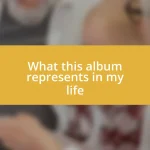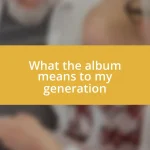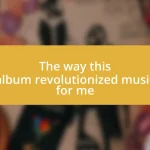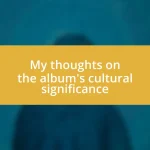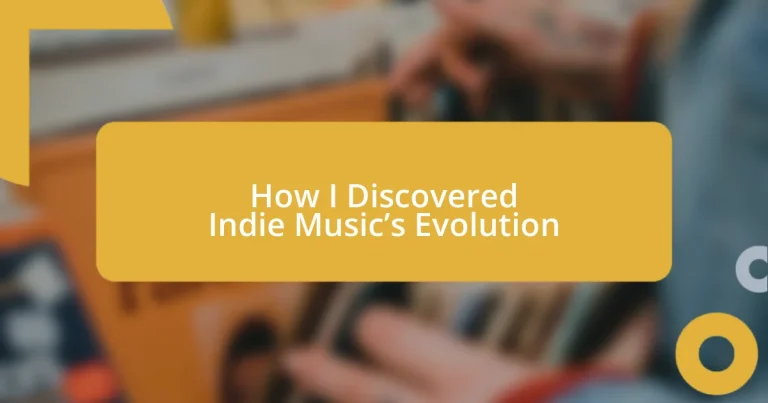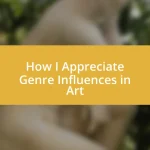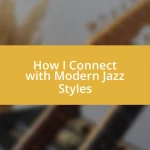Key takeaways:
- Indie music emerged from the 1980s DIY ethos, allowing artists to self-release and express authentic experiences away from major label constraints.
- The rise of online platforms like Bandcamp and SoundCloud in the early 2000s transformed accessibility, enabling diverse indie artists to reach wider audiences.
- Current trends include genre-blending and the integration of technology, such as AI and immersive live experiences, reshaping the future of indie music and collaboration.
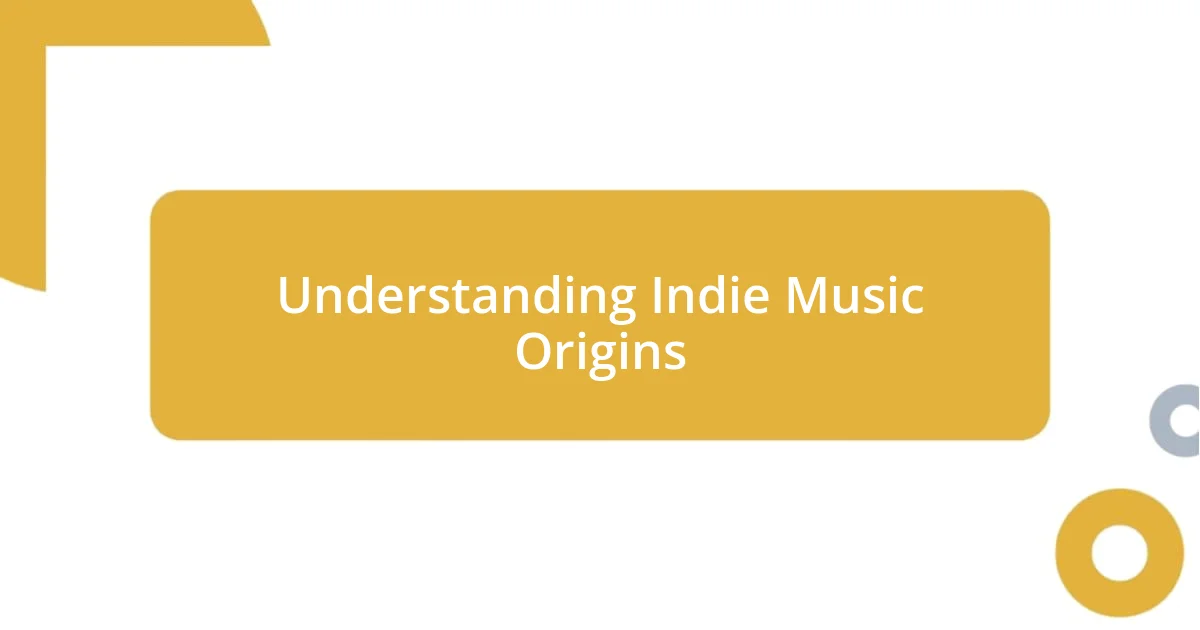
Understanding Indie Music Origins
Indie music, at its core, sprang from a desire for creative freedom, often in stark contrast to commercial music production. I remember the first time I stumbled upon an indie band playing in a dimly lit café. The raw energy and authenticity of their performance left a lasting impression on me—almost like hearing an artist speak their truth without filters. Isn’t it fascinating how music can become a conduit for unfiltered expression?
The roots of indie music can be traced back to the DIY (do-it-yourself) ethos of the 1980s, when artists began self-releasing albums to escape the constraints of major labels. I’ve often wondered how many songs that floated under the radar during that time still resonate in the underground scene today. It’s a testament to the resilience of musicians who refuse to conform to industry norms, crafting sounds that mirror their unique experiences.
Reflecting on this evolution, I feel a personal connection to the stories behind those early indie artists. They weren’t just making music; they were carving out safe spaces for listeners to connect with their own journeys. It’s intriguing how indie music continues to evolve while retaining that spirit of authenticity, isn’t it? What do you think drives this continual push for genuine self-expression within the indie genre?
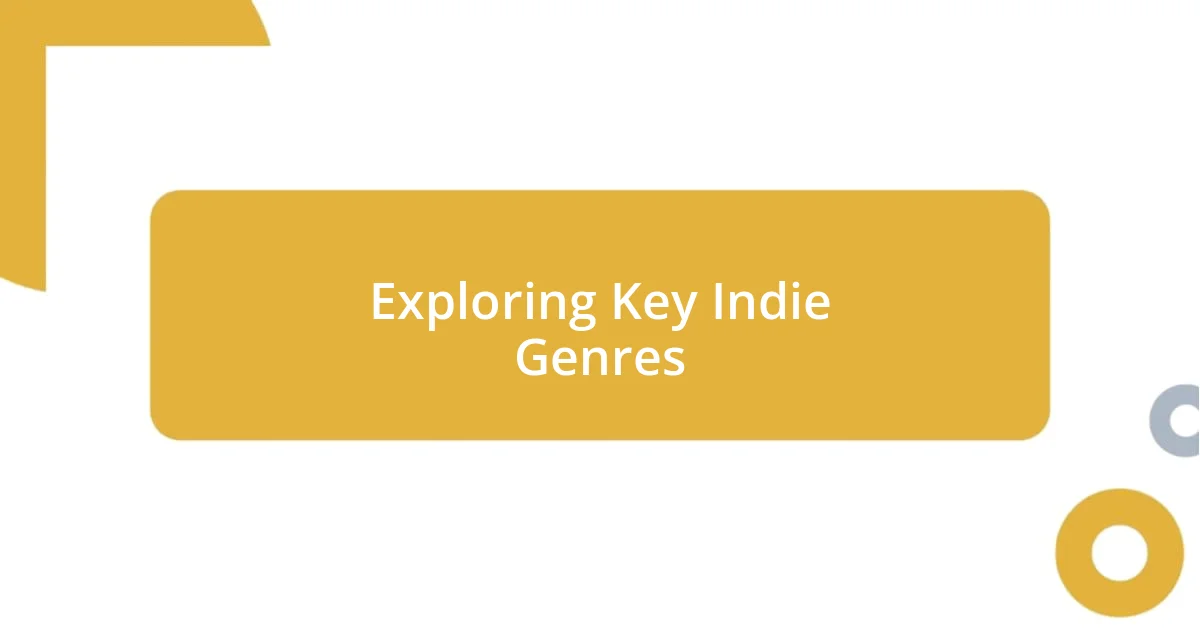
Exploring Key Indie Genres
When I think about the evolution of indie music, a few genres stand out that have significantly shaped its identity. For instance, lo-fi is one genre that captures a raw, unpolished sound—almost like a sonic diary. The first time I listened to a lo-fi album, it felt as though I had tapped into someone’s personal moments, every crackle and imperfection a part of their story. Similarly, indie rock, with its diverse influences and emphasis on lyrical storytelling, resonates deeply with me. I remember driving down winding roads, windows down, blasting an indie rock playlist, feeling like every lyric was written for my own adventures.
Here are some key indie genres that have played a pivotal role:
– Lo-fi indie: Characterized by its raw production, creating an intimate listening experience.
– Indie pop: Often upbeat and melodic, focusing on catchy hooks and relatable themes.
– Indie folk: Blends acoustic elements and storytelling, perfect for quiet evenings or reflective moments.
– Dream pop: Ethereal soundscapes that transport you to another world, evoking strong emotions.
– Post-rock: Instrumental sound that builds a cinematic atmosphere—perfect for deep contemplation.
Each of these genres not only contributes to the rich tapestry of indie music but also forms a personal connection with listeners like me, allowing us to find our own narratives within the melodies.
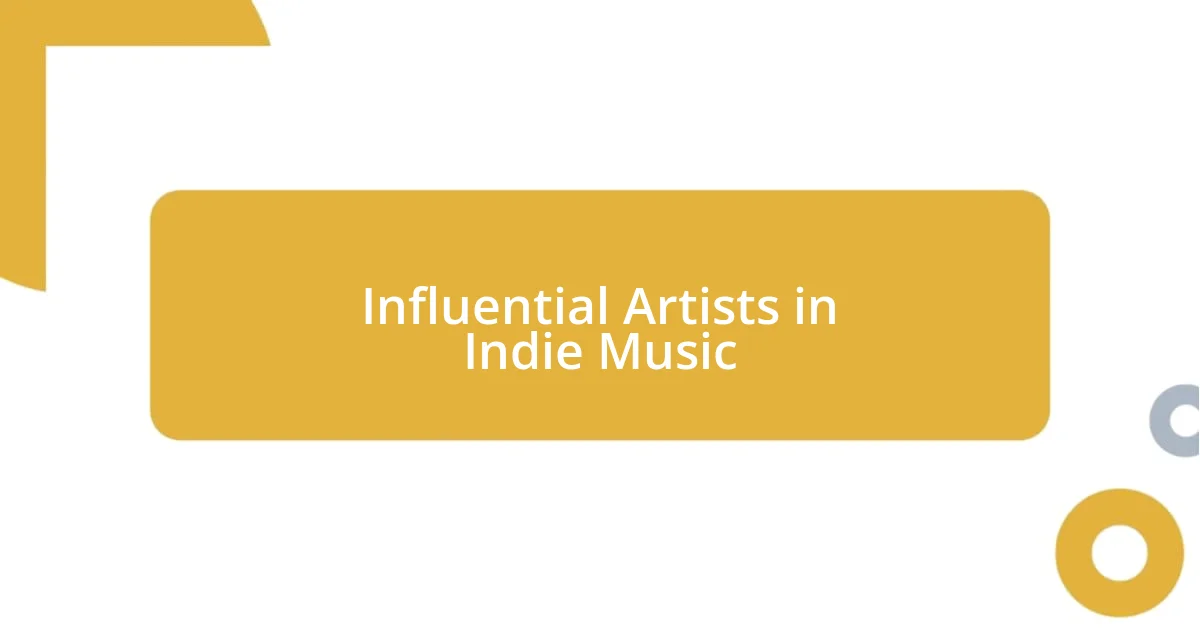
Influential Artists in Indie Music
The landscape of indie music boasts many influential artists who have shaped its trajectory. For instance, I remember the first time I listened to Elliott Smith’s poignant lyrics intertwined with his haunting melodies. His music felt like a warm embrace during challenging moments in my life, marking him as a pivotal figure in the genre. Similarly, I reflect on the impact of Sufjan Stevens, who seamlessly blends heartfelt storytelling with lush instrumentation. His album “Illinois” opened my eyes to the intricate layers that indie artists weave through their songs, leaving me in a state of introspection long after the music fades.
Then there’s the undeniable influence of bands like Arcade Fire and their anthemic sound that embodies the spirit of community. I think back to one of their concerts I attended, where the atmosphere pulsed with energy, and the crowd sang along in perfect harmony. Moments like these reinforce my belief that indie music is about more than just sound; it’s a movement driven by connection and shared experiences.
| Artist | Influence |
|---|---|
| Elliott Smith | Known for his introspective lyrics and lo-fi sound, he paved the way for emotional vulnerability in indie music. |
| Sufjan Stevens | Blends sophisticated arrangements with personal storytelling, expanding the thematic depth of indie tunes. |
| Arcade Fire | Revitalized indie rock with their grand sound and themes of community, inspiring numerous indie bands to follow suit. |
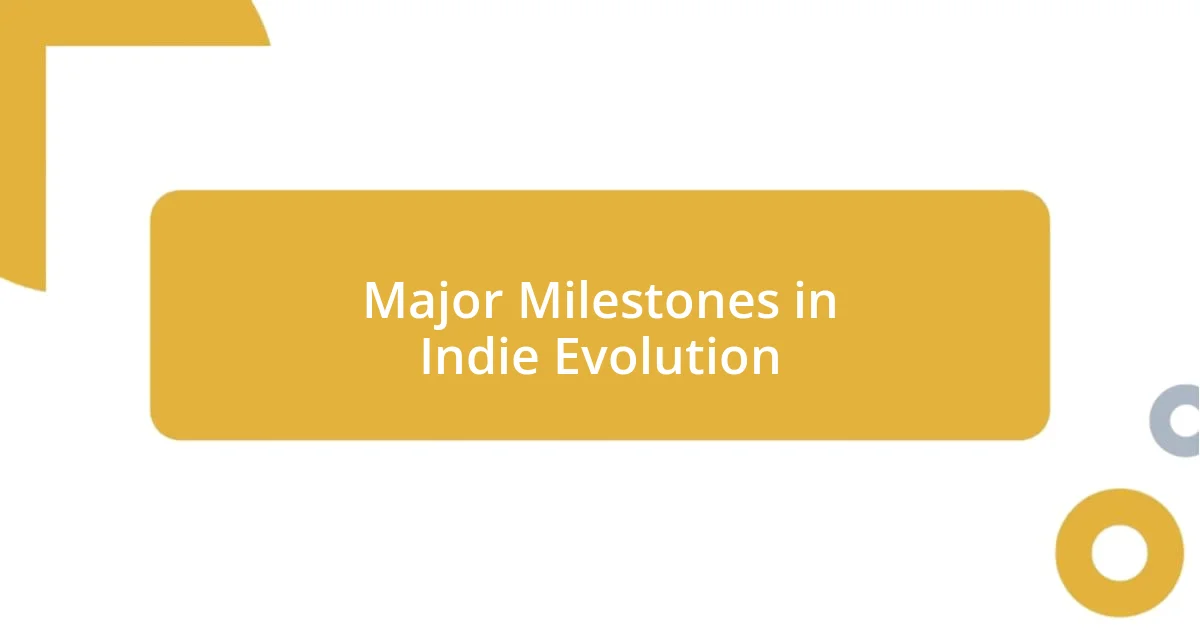
Major Milestones in Indie Evolution
As I look back on the evolution of indie music, a few major milestones really stand out. The 1990s marked a significant turning point—this was the era when bands like Radiohead began redefining what indie rock could be. I can remember finding a friend’s mixtape with tracks from “OK Computer” on repeat, the blend of experimental sounds and lyrical depth left me exhilarated and utterly hooked. It made me wonder, how could music feel both alien and familiar at the same time?
Fast forward to the early 2000s, and we witnessed the rise of online platforms that transformed indie music’s accessibility. The emergence of platforms like Bandcamp and SoundCloud made it possible for countless artists—who might have struggled to get heard—to share their work directly with fans. I recall discovering a tiny indie band from my hometown on Bandcamp; their songs resonated with my experiences, and I felt an instant connection. It was a reminder that indie music was evolving not just artistically but also in how it connected us.
More recently, I see the explosion of genre-blending as another crucial milestone. With artists like Bon Iver fusing indie folk with electronic elements, the boundaries that once defined genres are blurring. I often find myself amazed at how my playlists now dance between sounds, each song influencing the next. Have you ever listened to an indie track that’s made you feel like every genre you know is intertwined in a beautiful tapestry? That’s the essence of today’s indie scene, and it excites me to think about what’s still to come.
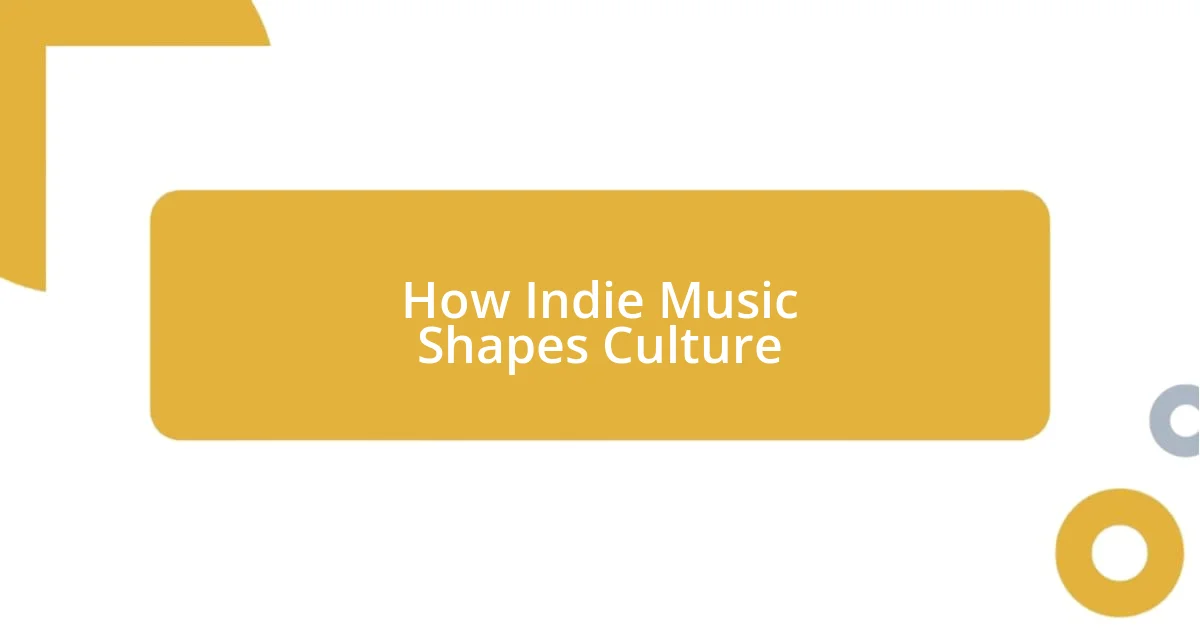
How Indie Music Shapes Culture
The impact of indie music on culture is profound, creating spaces where diverse voices can emerge and resonate. There was a time when I stumbled upon a local indie festival, where I discovered artists from various backgrounds sharing their stories through music. It was remarkable to see each artist reflecting their unique experiences, creating a rich cultural tapestry that united us all. This kind of representation empowers individuals and fosters a sense of community.
Moreover, I often notice how indie music influences fashion trends and lifestyle choices. Have you ever found yourself adopting an artist’s style after being captivated by their music? I distinctly recall trying on thrifted clothes inspired by the quirky fashion of indie musicians I admired. It felt like an invitation to express myself creatively. This intersection of music and personal expression reveals how indie artists serve not just as entertainers but as cultural trendsetters.
Then there’s the way indie music sparks conversations around social issues. I think back to a powerful song I heard that addressed mental health struggles, making me feel seen and understood. It moved me to share my own experiences, leading to open discussions among friends. This ability to bridge personal vulnerability with broader societal themes highlights how indie music can be a catalyst for change, encouraging listeners to engage with issues that matter deeply, even on a community level.
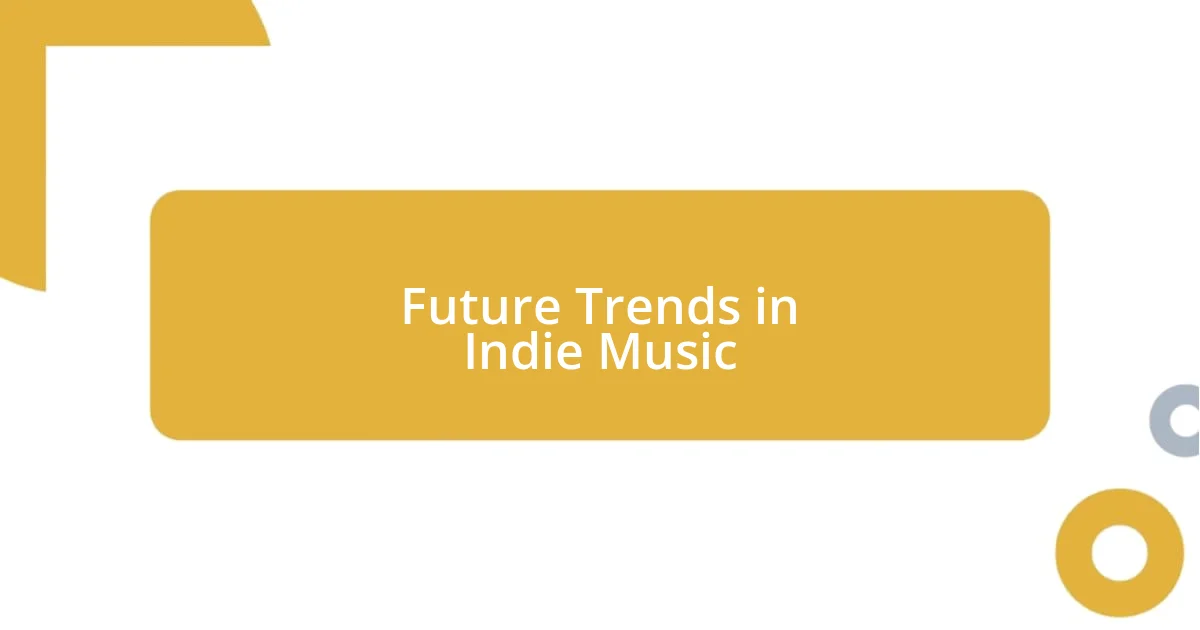
Future Trends in Indie Music
As I gaze into the future of indie music, I can’t help but think about how technology will continue to shape the scene. Emerging platforms powered by artificial intelligence are set to revolutionize how artists create and distribute music. I recently experimented with an AI music generator, and the results were fascinating. It made me question: could this technology actually enhance creativity, or will it dilute the authentic human touch that defines indie music?
Another trend I’ve been noticing is the rise of immersive live experiences. With virtual reality and augmented reality becoming more mainstream, indie artists are beginning to explore these mediums for performances. I attended a virtual concert recently, and it felt surreal to be part of a crowd from the comfort of my home. But it also made me wonder—will this kind of experience replace live gigs, or is there something irreplaceable about the raw energy of a physical venue?
Looking ahead, I believe that collaboration will become an even more vital aspect of indie music’s evolution. Artists are increasingly working across genres and geographical boundaries. Just last month, I heard an incredible track that paired a local indie band with an international electronic artist, creating a sound that was entirely new yet deeply resonated with me. It raises the question: how many more unique musical discoveries await us as boundaries continue to fade? I can really feel the excitement of what’s to come!
